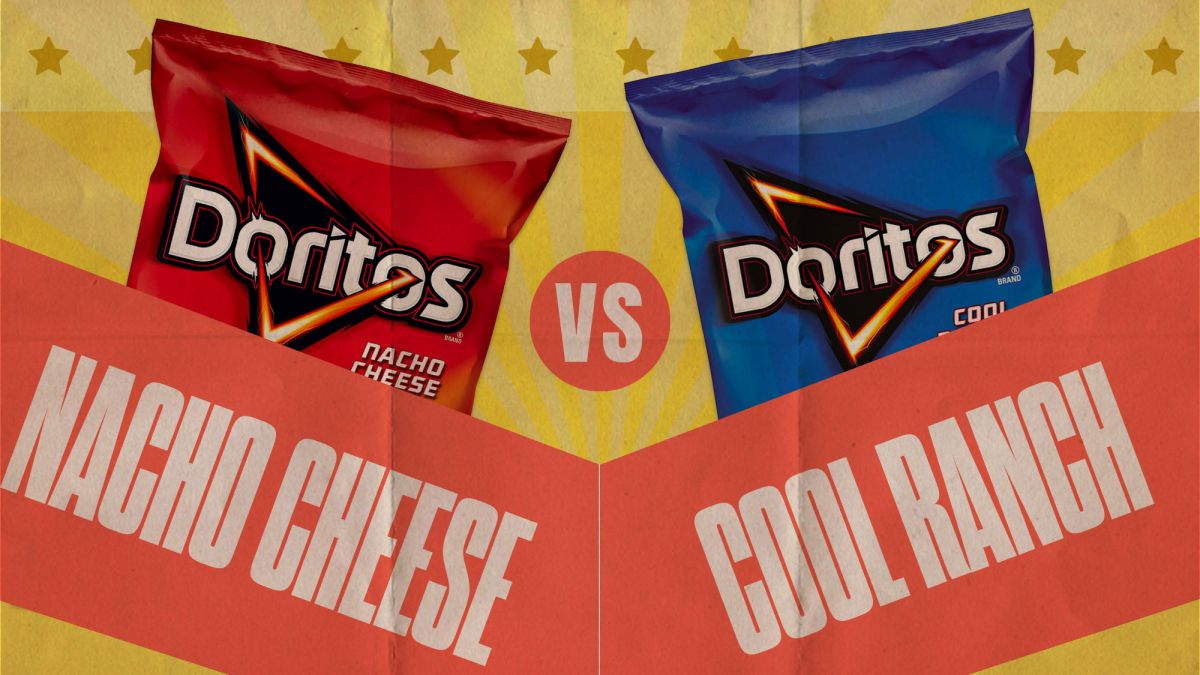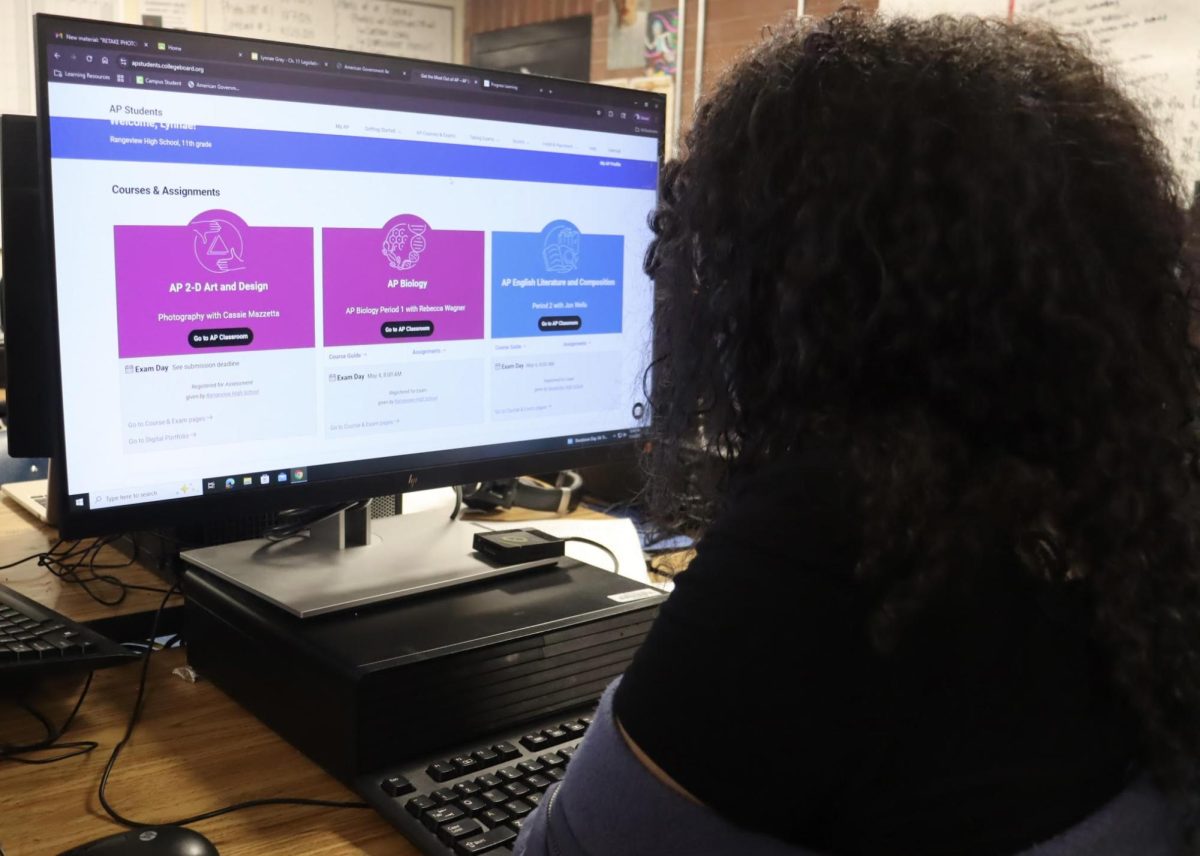Feature Photo By: Myriam Alcala – Freshman and sophomore Latinx/Hispanic students pose outside of their classroom. As you can see, they do not look the same. “Latinos come in different colors,” added sophomore Jessie Delgado.
Blonde hair. Blue eyes. Fair skin. As these characteristics flash through the screen, what goes through your head?
White.
Often times, people that fall under the characteristics of having fairer features are thought of as the stereotypical “white person”, with no regard to what lies beneath the appearance. It is not until people hear you speak Spanish that they start to realize that there is much more to appearances, and I’m tired of it.
“You don’t look like where you’re from,” and “are you sure you’re from there?” are only a few comments many white Latinxs are likely to receive more than once in their lives. Some people get these comments almost every day.
“It happens a lot when I start speaking Spanish,” said sophomore Jessie Delgado, adding that, “Latinos come in different colors.”
The terms Latinx/Hispanic groups together a vast population of people into one and often leads to a lot of misunderstandings and complex labeling not only within the group, but when interacting with other groups of people as well.
Just like in today’s society where individuals have to be cautious when talking about gender identity, religion, or sex, it is important to be cautious when approaching Latinx people — especially white Latinx people. Just like the topics listed above, it’s disrespectful to ask a white Latinx person, “What are you?” and even more disrespectful to use terms like “Gringo” when talking to a Hispanic/Latino.
Instead of being ignorant to the complexities of the Latinx population, it is about time that we have the talk: what does it mean to be Latinx?
Race and Ethnicity not Race/Ethnicity
When filling out personal information, there is a dilemma for the Latinx/Hispanic community: what are white Latinx people? Race is a social construct built to separate people based on skin color. According to this definition, Latinx people with white features are, white. But then what about the box that says “Hispanic/Latinx”? White Latinx people are also ethnically Latinx/Hispanic but racially white…so what do they choose?
Delgado says that she personally chooses Latinx: “I pick Latino because I don’t identify with a lot of the American culture here, I’m more tied to my Latino roots.”
The point is, the Latinx community comes in all different colors: some white, some brown, some in between; that does not make one Latinx person more Latinx than another. Do not think that just because the person standing in front of you doesn’t look like the stereotypical Latinx person in your head, doesn’t mean they’re not.
Differences Between Latinx and Hispanic

Were you aware that some Latinx people are not Hispanics and some Hispanics are not Latinx and some Hispanics speak French instead of Spanish?
The terms “Hispanic” and “Latinx” were created by Americans to group all the people in Central and South America to make it “easier”. Often when visiting these areas, you wouldn’t hear people define themselves by these terms as we do in the U.S. Instead people refer to themselves as their country: “I’m Colombian” or “I’m Venezuelan”.
But, since we are in the United States, it is important to know the difference between Hispanic and Latinx:
Hispanics are populations/countries that were colonized by Spain during the Colonization era.
These people include most of South America, Central America, the Caribbean Islands and a part of Canada…yes, a small section of Canada was colonized by Spain and although they speak French, they are technically Hispanic.
These people do not include: Spain, Portugal, Brazil, most of Canada, and the United States.
(I included the European countries: Spain and Portugal because often times they are grouped with Hispanics and Latinx since they were the colonizers of Central and South America.)
Now someone that identifies as Latinx is a person from Latin America.
These people include: All of South America, Central America, and the Caribbean Islands.
These people do not include: Canada, the United States, Portugal, Spain, and Italy.
The labels again were created in the United States, these hasty generalizations groups up a vast majority of people together and can be seen as a deprivation of culture and individuality. I know personally I get angered when people refer to a large crowd of Spanish speakers as “Mexican” or just simply assume someone from Latin America (specifically Brazil) is Hispanic; so before making a generalization or assumption, ask. It’s really that simple.
Colorism
Adding on to what was said previously in regards to the grouping of a lot of people — many social problems and tensions have resulted from this.
Colorism is the discrimination of someone based on their skin color, usually between one race or ethnic group.
Sophomore, Mirika Nogueda says, “In the stores or like when I’m walking around, people just look at me differently because of my skin color.”
Just like white Americans have privilege, white Latinx people have privilege. For example, if a white Latino and a brown Latino walk into the store, more often than not, the brown Latino will be followed and given dirty looks while the white Latino will be ‘treated better’ because of their light complexion.
Just as society treats Latinxs of darker skin collection differently, they are treated as inferior within the Latinx community as well. Brown Latinx people are usually seen as housemaids, servants, and overall less than white Latinx people –so if you are part of the white Latinx community, yes you have a step up and you need to recognize this fact.
Much of this discrimination comes from white, prospering Latin American countries (such as Argentina and Chile) and some might find surprising that the worst discrimination comes from Spain and most of the time is directed towards Mexico.
So no, there is no “one type” of Latinx person, there is not harmony within the race, and yes, oppression is still existent.
At the end of the day, just like students and adults educate themselves on correctness in regards to gender, sex, and other social topics, it is about time that we educate ourselves on the Latinx community. The Latinx is now the largest minority in the U.S. and still, people do not take the time to learn more about them.
Sophomore, Rocio Medellin agrees with this by adding, “A lot of people assume things about Latinos saying “Latinos do this” and “Latinos are this” when other people do the same thing.
Quite frankly, it’s tiring to correct people every time I’m called “white” or explaining myself to people when they say “I don’t look Mexican”. There are such things as white Latinx people, there are such things as Hispanic french people, and there is so much more to the label “Hispanic/latinx”.






